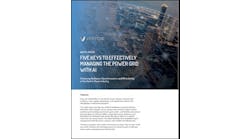By Elisa Wood
August 6, 2009
If we try to reduce greenhouse gases, the economy will take a hit, according to conventional wisdom. The Energy Information Administration bolstered the notion this week by reporting that energy prices would rise for the average US family by $142 in 2020 and $583 in 2030 under the House cap and trade bill passed in late June.
Steven Chu, US energy secretary, tried to soften the blow by saying that the carbon invoice amounted to less than a postage stamp per day. But cash-strapped US households are counting their postage stamps these days and finding they have none to spare.
So if cap and trade truly increases costs, it may be a tough sell to the American public when taken up by the Senate in September. But must we take an economic hit to revamp our energy supply?
The American Council for an Energy Efficient Economy offers an interesting twist on the conventional thinking about the cost of carbon reduction. If we do it right, we could actually better the economy, the organization says in its report, “The Positive Economics of Climate Change Policies: What the Historical Evidence Can Tell US,’ by John “Skip” Laitner, an ACEEE senior economist.
Laitner provides some interesting historic detail to underscore the argument that energy efficiency can reduce greenhouse gases without breaking the bank. Efficiency is not only relatively cheap, but it also creates a more productive economy. Consider this: The US has expanded its output threefold since 1970 and doubled its per capita income, yet the nation only increased its demand for power by 50% because of energy efficiency.
To give perspective on what this means, Laitner converted our energy use into equivalent gallons of gasoline. Today we use the energy equivalent of 2,600 gallon of gasoline per resident; had we not imposed greater efficiency, we would be using the equivalent of 5,500 gallons per person.
So, we have reduced our “energy intensity,” the amount of energy it takes to support a dollar of economic activity. “This decoupling of economic growth and energy consumption is a function of increased energy productivity: in effect, the ability to generate greater economic output, but to do so with less energy,” the report says.
Analysts tend to over-estimate the cost of carbon reductions by underestimating the economic benefits of energy efficiency. For example, energy efficiency not only reduces energy bills, but also often leads to cuts in other costs to homes, buildings and factories. Maintenance, water use, chemical use all tend to decline.
“Changing our investment mix away from traditional, energy intensive patterns toward one that emphasizes more productive technology and behavior, greater energy efficiency, and more labor intensive activities can yield higher rates of economic growth and lower economic and environmental costs,” says the report. “In many ways this is much like rebalancing of a retirement portfolio to take advantage of changing market conditions and new growth opportunities.”
We managed to accomplish a high level of efficiency over the last 40 years with no particular plan. In fact, we proceeded in a “haphazard” and sometimes “counterproductive” way, says the report. What kind of energy productivity could we achieve if we actually tried? Might our energy secretary 40 years from now be talking not about what the new energy economy cost, but what it saved American households?
The report is available at: http://www.aceee.org/.
Visit Elisa Wood at www.realenergywriters.com and pick up her free Energy Efficiency Markets podcast and newsletter





